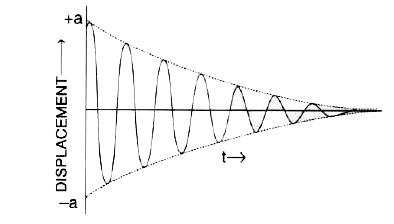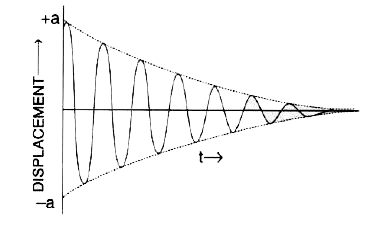Amplitude depends on the ........... of the vibrating body
length
thickness
volume
area
To solve the question "Amplitude depends on the ........... of the vibrating body," we need to analyze the options provided and understand the concept of amplitude in relation to a vibrating body.
1. Understanding Amplitude:
- Amplitude refers to the maximum extent of a vibration or oscillation, measured from the position of equilibrium. It is essentially the maximum displacement of points on a vibrating body from its rest position.
2. Analyzing the Options:
- Option 1: Length: This refers to the measurement of how long the vibrating body is. In many cases, the length of a vibrating string or column of air can affect how it vibrates and the amplitude of those vibrations.
- Option 2: Thickness: This refers to how thick the vibrating body is. While thickness can influence the sound produced, it is not a direct measure of amplitude.
- Option 3: Volume: This refers to the space occupied by the vibrating body. Volume does not directly determine amplitude.
- Option 4: Area: This refers to the surface area of the vibrating body. Like volume, area does not directly determine amplitude.
3. Conclusion:
- Among the options, length is the most relevant factor that directly influences the amplitude of a vibrating body. Therefore, the correct answer is Option 1: Length.
Final Answer:
Amplitude depends on the length of the vibrating body.
---
- Amplitude refers to the maximum extent of a vibration or oscillation, measured from the position of equilibrium. It is essentially the maximum displacement of points on a vibrating body from its rest position.
- Option 1: Length: This refers to the measurement of how long the vibrating body is. In many cases, the length of a vibrating string or column of air can affect how it vibrates and the amplitude of those vibrations.
- Option 2: Thickness: This refers to how thick the vibrating body is. While thickness can influence the sound produced, it is not a direct measure of amplitude.
- Option 3: Volume: This refers to the space occupied by the vibrating body. Volume does not directly determine amplitude.
- Option 4: Area: This refers to the surface area of the vibrating body. Like volume, area does not directly determine amplitude.
- Among the options, length is the most relevant factor that directly influences the amplitude of a vibrating body. Therefore, the correct answer is Option 1: Length.
Amplitude depends on the length of the vibrating body.
Topper's Solved these Questions
- SOUNDBOOK - ICSECHAPTER - SOUNDEXERCISE - Exercises (Section I) Write T for True and F for False. Correct the false statements.
9 Videos
- SOUNDBOOK - ICSECHAPTER - SOUNDEXERCISE - Exercises (Section I) Choose the correct option to fill in the blank.
7 Videos
- SOUNDBOOK - ICSECHAPTER - SOUNDEXERCISE - Exercises (Section I) Name the following
8 Videos
- PHYSICAL QUANTITIES AND MEASUREMENT BOOK - ICSECHAPTER - PHYSICAL QUANTITIES AND MEASUREMENT EXERCISE - Picture Study
3 Videos
- WORK AND ENERGYBOOK - ICSECHAPTER - WORK AND ENERGYEXERCISE - Picture Study
3 Videos
Similar Questions
The frequency of a sound depends on the .................. of the vibrating object.
View SolutionFill in the blank space by choosing the correct word from the list given below :
List: ultrasonic, frequency, reflecting, sonar, amplitude
The loudness of sound depends on the extent of _________ of a vibrating body.
View Solution
Knowledge Check
When a body vibrates under a periodic force, the vibrations of the body are :
Anatural vibrationsBdamped vibrationsCforced vibrationsDresonant vibrations.
Write true or false for the following statement.
Loudness does not depend on the area of vibrating body.
View SolutionHow does loudness depend on the amplitude of vibration?
View SolutionHow does the loudness of sound produced depend on the vibrating area of the body ?
View SolutionA certain simple harmonic vibrator of mass 0.1 kg has a total energy of 10 J. Its displacement from the mean position is 1 cm when it has equal kinetic and potential energies. The amplitude A and frequency n of vibration of the vibrator are
View SolutionThe diagram in Fig. shows the displacement time graph of a vibrating body.

Name the kind of vibrations.
View SolutionThe diagram in Fig. shows the displacement time graph of a vibrating body.

Give one example of such vibrations.
View SolutionThe diagram in Fig. shows the displacement time graph of a vibrating body.

Why is the amplitude of vibrations gradually decreasing ?
View Solution
